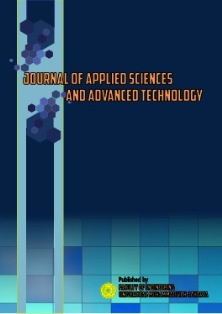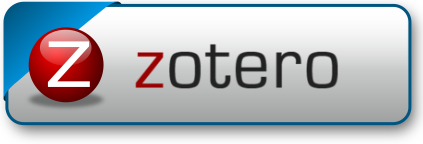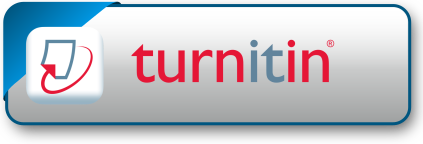The Organoleptic and Physicochemical Characteristic of Gelato by Fish Bone Gelatin Addition
DOI:
https://doi.org/10.24853/jasat.1.1.31-38Keywords:
Ice cream, Fish based gelatin, Hedonic test, StabilizerAbstract
This study aims to determine the effect of fish bone gelatin addition on physical, chemical, and organoleptic characteristics of gelato. This research was done on three stages: fish bone gelatin extraction, gelato production and analysis. The treatment factor consists of concentration: 0%, 0.4%, 0.8% and 1.2% of fish bone gelatin additions. Data were analyzed by one way analysis of variant (ANOVA) at level 5% and then continued by Tukey HSD (Honestly Significant Different) test or Tukey’s range test. The result shown that fish bone gelatin addition has effect to organoleptic, physical, and chemical characteristics of gelato. The best concentration was 1.2% for fish bone gelatin addition. Gelato with concentration 1.2 % fish bone gelatin have texture, taste, colour, aroma and aftertaste range in netral until like slightly in organoleptic (hedonic) value range i.e between 2.62 until 3.70. This gelato have overrun, melting point and pH in 30.48%, 38.4 minutes and 6.6 respectively. It was contains 3.62% protein, 6.32% fat, and 15,62% sucrose. This nutrition contents was confirm with the Indonesian National for Standardization (SNI) for ice cream groups.Downloads
References
GMIA, Offical procedure of the gelatin manufacturers institute of America (2013) 563.
M.S. Alfaifi, C.E. Stathopoulos, Int Food Res J 17 (2010) 787.
Y. Atma, H. Ramdhani, Indones J Biotechnol 22 (2017 ) 86.
R.A. Frazier, Food Scince and Technology. Oxford (GB): Wiley Blackwell (2009)
H.D. Goff, R.W. Hartel, New York (US): Springer (2013)
E.S. Hartatie, Gamma 7 (2011) 20
A.A. Karim, Bhat, J Food Hidrocolloids 23 (2009) 563.
L. Umu, Institut Pertanian Bogor (2015)
F. Mahmoodani, A.V. Sanaei, S.F. See, S.M. Yusop, and A.S. Babji, J. Food Sci Technol 51 (2014) 3104.
R.T. Marshall, H.D. Goff, R.W Hartel, Kluwer Academic/ Plenum Publishers (2003)
M. Preininger, CRC Press (2005)
D.K. Sari, Sekolah Pasca Sarjana, Institut Pertanian Bogor (2017)
T.E. Susilorini, M.E Sawitri, Penebar Swadaya (2007)
D.R Mulyani, N.E. Dewi, R.A Kurniasih, J Peng & Biotek 6 (2017) 2442
BSN, Badan Standardisasi Nasional (1995)
M.R. Muse, R.W. Hartel, J Dairy Sci. 87 (2004) 1
S. Winarni, Universitas Muhammadiyah Surakarta (2015).
H.D. Goff, Int Dairy J. 7 (1997) 363
Y. Atma, H. Ramdhani, A.Z. Mustopa, M. Pertiwi, R. Maisarah, Agritech 38 (2018) 56
L. Hyvonen, M. Linna, H. Tuorila, G. Dijksterhuis, J Dairy Sci. 86 (2003) 1130
M. Harju, H. Kallioinen, O. Tossavainen, Int Dairy J. 22 (2010) 104
Downloads
Published
Issue
Section
License
COPYRIGHT POLICY
The author(s) of an article published in the Journal of Applied Sciences and Advanced Technology (JASAT) retains ownership of the intellectual property rights in work (s).
PUBLISHING RIGHTS
The author(s) of an article published in the Journal of Applied Sciences and Advanced Technology (JASAT) have unrestricted publication rights. The authors give the Journal of Applied Sciences and Advanced Technology (JASAT) the right to publish the article and designate the Faculty of Engineering Universitas Muhammadiyah Jakarta Publishing as the original publisher of the article.
LICENSING POLICY
JASAT is an open-access journal that follows the Creative Commons Non-Commercial 4.0 International License (CC BY-NC 4.0), which states that:

Under this license, the reusers must give appropriate credit, provide a link to the license, and indicate if changes were made. Users may do so in any reasonable manner, but not in any way that suggests the licensor endorses users or their use.
Please take the time to read the whole license agreement (https://creativecommons.org/licenses/by-nc/4.0/). As long as reusers follow the license conditions, the owner cannot withdraw these freedoms. The following components are included under this license:
 Attribution: Users must provide appropriate attribution, including a link to the license, and indicate whether or not they made any modifications. Users are free to do so reasonably, but not in a manner that indicates the licensee approves of their usage.
Attribution: Users must provide appropriate attribution, including a link to the license, and indicate whether or not they made any modifications. Users are free to do so reasonably, but not in a manner that indicates the licensee approves of their usage.
 NonCommercial: Users may not use the material for commercial purposes.
NonCommercial: Users may not use the material for commercial purposes.












_2.png)


1.png)

2.png)
